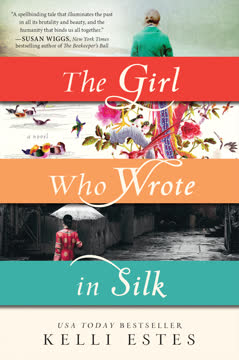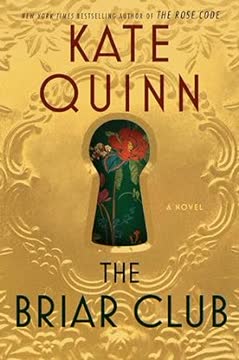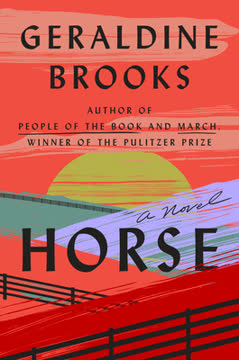Plot Summary
Silk and Saltwater Fates
The story opens with Mei Lien, a young Chinese woman in 1886, forced by her father to jump from a steamship to escape certain death during a violent anti-Chinese purge in Seattle. In the present day, Inara Erickson returns to her family's crumbling estate on Orcas Island, haunted by her mother's death and uncertain about her future. Both women are bound by the tides of fate and the pull of the Pacific Northwest's saltwater, their destinies set in motion by acts of desperation and hope.
Inheritance and Unraveling
Inara inherits the Rothesay estate and faces the daunting task of deciding its future. While exploring the house, she discovers a hidden silk sleeve, intricately embroidered and concealed under a stair tread. The find unsettles her, hinting at secrets buried within her family's history. As she debates whether to sell the estate or fulfill her late aunt's wish to turn it into a boutique hotel, the silk's mystery begins to unravel her own sense of identity and belonging.
Exile from Seattle
Mei Lien's world is shattered when a white mob violently expels the Chinese community from Seattle. She, her father, and grandmother are herded onto a steamship, supposedly bound for China. The journey is fraught with terror, culminating in the revelation that the ship's owner plans to murder the Chinese passengers by dumping them at sea. Mei Lien's father, desperate to save her, forces her overboard near an island, sacrificing himself so she might survive.
Hidden in the Stairs
Inara, with her sister Olivia, investigates the silk sleeve, speculating about its origins and the reason for its concealment. The sleeve's embroidery depicts a steamship, swirling water, and drowning figures—an unsettling tableau. The sisters sense the artifact is a witness to a forgotten tragedy, and Inara becomes determined to uncover its story, even as she grapples with her own family's complicated legacy.
Two Women, Two Centuries
Mei Lien is rescued by Joseph, a white settler on Orcas Island. Disguised as a boy, she hides her identity and mourns her lost family. Joseph offers her shelter, and a tentative trust grows between them. Inara, meanwhile, debates her future: a safe corporate job or the uncertain promise of restoring Rothesay. Both women are outsiders, seeking sanctuary and a sense of home in a world that resists their presence.
The Steamship's Secret
Inara consults Professor Daniel Chin, an expert in Chinese textiles, who is captivated by the sleeve's unique embroidery. Together, they deduce that the sleeve tells a personal story, possibly a confession or accusation. As Daniel's research deepens, he and Inara grow closer, their partnership echoing the cross-cultural connection between Mei Lien and Joseph. The past's secrets begin to surface, threatening to upend the present.
Sanctuary and Suspicion
Mei Lien and Joseph's relationship deepens, leading to marriage and the birth of their son, Yan-Tao. Yet, their happiness is shadowed by the islanders' racism and the ever-present threat of Duncan Campbell, Joseph's neighbor and the steamship's owner. Mei Lien's existence is precarious, her family's safety dependent on secrecy and the fragile goodwill of others. Inara, too, faces skepticism from her father and the community as she pursues her vision for Rothesay.
Threads of Survival
Mei Lien's life is marked by resilience—she survives violence, loss, and isolation, pouring her story into the embroidered robe she creates for her son. As Joseph is lost at sea and Mei Lien's health fails, she arranges for Yan-Tao's adoption by Joseph's white relatives, ensuring his survival but at the cost of his heritage. The sleeve, cut from the robe and hidden, becomes her final act of testimony, a plea for remembrance.
The Weight of Legacy
Inara's research uncovers a devastating truth: her ancestor, Duncan Campbell, orchestrated the mass murder of Chinese passengers, including Mei Lien's family. The revelation shatters her sense of pride and belonging, forcing her to confront the moral cost of her inheritance. She struggles with whether to reveal the truth, knowing it could destroy her family's reputation and her own dreams for Rothesay.
The Past Emerges
Daniel's research reveals that Yan-Tao survived, adopted a new identity as Ken Chin, and became Daniel's ancestor. The Chin and Erickson families are thus bound by a shared, painful history. The reunion of the robe and sleeve at Rothesay becomes a moment of reckoning, as both families must decide how to honor the truth and each other. Inara and Daniel's relationship is tested by the weight of the past.
Love and Loss Intertwined
Mei Lien's final days are spent finishing the embroidered sleeve, her legacy to her son and to history. She dies alone, her story nearly lost but for the artifact she leaves behind. Inara, devastated by her father's death and the loss of Daniel's trust, must find the strength to forgive herself and seek forgiveness from others. The possibility of healing emerges as both women's stories converge.
The Truth in Embroidery
Inara and her siblings choose to reveal the truth about Duncan Campbell's crimes, dedicating a public park to Mei Lien's memory. The act is both an apology and a step toward justice, acknowledging the suffering inflicted and the resilience of those who survived. The embroidered sleeve, now displayed at Rothesay, becomes a symbol of remembrance and reconciliation.
Reckoning and Redemption
With the truth acknowledged, Inara and Daniel reconcile, and the Chin and Erickson families forge a new partnership. Margaret Chin agrees to open a restaurant at Rothesay, ensuring the estate's future as a place of community and healing. The hotel becomes a living memorial, honoring both the pain and the hope woven into its walls.
The Water's Embrace
Mei Lien's spirit, like the seal that haunts the bay, is felt by those who remain. The water that once threatened to claim her becomes a place of peace and reunion. Inara, standing on the beach with Daniel, senses Mei Lien's approval, the past and present finally reconciled. The story ends with the promise of new life, love, and the enduring power of truth.
Forgiveness and New Beginnings
The legacy of violence and silence is broken as Inara, Daniel, and their families commit to remembrance and justice. Rothesay stands as a testament to the possibility of forgiveness, the healing of old wounds, and the creation of a more inclusive, compassionate future. The silk sleeve, once hidden in darkness, now shines in the light, its story finally told.
Characters
Mei Lien
Mei Lien is a seventeen-year-old Chinese American woman whose life is upended by the anti-Chinese violence of 1886 Seattle. Forced to flee, she survives betrayal, exile, and the loss of her family, finding refuge on Orcas Island. Her marriage to Joseph offers brief sanctuary, but she remains haunted by trauma and the threat of erasure. Mei Lien's psychological journey is one of resilience and longing for belonging. She pours her pain and hope into embroidery, creating a robe that becomes both confession and legacy. Her love for her son, Yan-Tao, drives her final acts, even as she faces death alone. Mei Lien's story is one of endurance, the struggle to be seen, and the power of art to bear witness.
Inara Erickson
Inara is a young woman caught between familial expectations and her own desires. Haunted by her mother's death and her father's controlling love, she inherits Rothesay and is thrust into a mystery that challenges her identity. Inara's psychological arc is marked by guilt, self-doubt, and the longing for connection. Her discovery of the silk sleeve propels her into a journey of historical reckoning, forcing her to confront the sins of her ancestors. Through her relationship with Daniel and her commitment to truth, Inara grows into a woman capable of forgiveness, leadership, and love. She becomes the bridge between past and present, healing wounds through courage and compassion.
Joseph McElroy
Joseph is a white settler on Orcas Island who rescues Mei Lien and becomes her husband. His kindness and open-mindedness set him apart from his peers, but he is not immune to the pressures of racism and isolation. Joseph's love for Mei Lien is genuine, but their happiness is always threatened by the hostility of the community and the machinations of Duncan Campbell. Joseph's death at sea is a turning point, leaving Mei Lien and Yan-Tao vulnerable. Psychologically, Joseph embodies the possibility of cross-cultural empathy, but also the limits of individual goodness in a prejudiced society.
Daniel Chin
Daniel is a Chinese American professor whose expertise in textiles and family history draws him into Inara's quest. As the great-great-grandson of Mei Lien, he is both investigator and inheritor of trauma. Daniel's relationship with Inara is tested by the revelation of their families' intertwined histories. He struggles with anger, betrayal, and the challenge of forgiveness. Ultimately, Daniel chooses reconciliation, helping to transform Rothesay into a place of remembrance and hope. His arc is one of reclaiming lost heritage and building a future rooted in truth.
Duncan Campbell
Duncan is the owner of the steamship and neighbor to Joseph and Mei Lien. He embodies the racism and greed of his era, orchestrating the murder of Chinese passengers for profit. His actions cast a long shadow over both families, shaping the destinies of generations. Psychologically, Duncan is driven by fear, entitlement, and a need for control. His legacy is one of shame and silence, ultimately confronted and repudiated by his descendants.
Charles Erickson
Inara's father is a successful businessman who struggles to balance love for his daughter with the desire to protect the family's reputation. He is complicit in the silence surrounding Duncan Campbell's crimes, fearing the consequences of truth. Charles's arc is one of gradual acceptance, culminating in his support for Inara's pursuit of justice. His death catalyzes Inara's final acts of courage and reconciliation.
Yan-Tao / Ken Chin
Yan-Tao is the son of Mei Lien and Joseph, orphaned by violence and prejudice. Adopted by white relatives, he is forced to abandon his heritage, eventually becoming Ken Chin, Daniel's ancestor. His life is marked by loss, adaptation, and the struggle to belong. Yan-Tao's psychological journey is one of resilience and reinvention, his mother's embroidery the only link to his origins.
Margaret Chin
Daniel's mother is a successful restaurateur who becomes Inara's business partner. She represents the strength and adaptability of immigrant families, embracing both tradition and innovation. Margaret's willingness to forgive and collaborate is crucial to the healing of both families. She is a nurturing presence, guiding her children and honoring the past while building for the future.
Vera Chin
Daniel's grandmother is the family's historian, fiercely protective of their legacy. She is skeptical, proud, and sometimes abrasive, but her knowledge is essential to uncovering the truth. Vera's arc is one of acceptance, as she comes to terms with the complexities of her family's origins and the necessity of reconciliation.
Olivia and Nate Erickson
Inara's sister and brother provide emotional grounding and practical support. They represent the broader family's struggle to come to terms with the past, ultimately choosing truth and justice over silence. Their willingness to stand with Inara is vital to the story's resolution.
Plot Devices
Dual Timeline Structure
The novel alternates between Mei Lien's 19th-century narrative and Inara's contemporary journey. This structure creates suspense, allowing the reader to piece together the mystery of the silk sleeve alongside the characters. The parallel arcs highlight themes of exile, belonging, and the inheritance of trauma, while also drawing connections between personal and historical reckonings.
The Embroidered Sleeve
The silk sleeve is both a literal and symbolic device, bearing silent testimony to a hidden atrocity. Its discovery propels the plot, serving as a bridge between generations and a catalyst for truth-telling. The embroidery's images function as foreshadowing, gradually revealing the story's central crime and its emotional consequences.
Hidden Histories and Family Secrets
The novel's central tension arises from secrets—Mei Lien's hidden identity, the concealed massacre, and the silence maintained by Inara's family. The gradual uncovering of these truths forces characters to confront guilt, shame, and the possibility of redemption. The motif of things hidden in walls, stairs, and archives underscores the persistence of the past.
Intergenerational Trauma and Healing
The psychological scars borne by Mei Lien, Yan-Tao, and their descendants are mirrored in Inara's struggles with grief and identity. The narrative structure allows for the exploration of how trauma is transmitted and how healing can occur through acknowledgment, apology, and acts of remembrance.
Symbolism of Water and Embroidery
Water is both threat and solace, representing the forces that shape and sometimes destroy lives. Embroidery, as Mei Lien's chosen medium, becomes a metaphor for storytelling, resilience, and the possibility of beauty emerging from pain. Both motifs recur throughout the novel, binding the characters' experiences across time.
Analysis
The Girl Who Wrote in Silk is a moving exploration of how the past shapes the present, and how silence can perpetuate injustice across generations. By weaving together the stories of Mei Lien and Inara, the novel confronts the legacy of anti-Chinese violence in America—a history often erased or ignored. Through the device of the embroidered sleeve, Estes illustrates how art can bear witness when words fail, and how the act of remembering is itself an act of resistance. The novel's dual timeline structure allows for a nuanced examination of intergenerational trauma, the complexities of forgiveness, and the courage required to break cycles of silence. Ultimately, the story argues that healing is possible only when the truth is faced, acknowledged, and honored. The transformation of Rothesay from a site of hidden shame to a place of community and remembrance offers a hopeful vision: that by confronting the darkness in our histories, we can create spaces of belonging, justice, and new beginnings.
Last updated:
Review Summary
The Girl Who Wrote in Silk received mixed reviews, with an average rating of 4.10 out of 5. Many readers appreciated the dual timeline narrative and the exploration of Chinese-American history, particularly the Chinese Exclusion Act. The historical storyline was generally more praised than the contemporary one. Some found the writing style and plot predictable, while others were deeply moved by the characters and their experiences. The book's handling of racial prejudice and family secrets resonated with many readers, though some criticized certain plot elements as unrealistic or contrived.
Similar Books
Download PDF
Download EPUB
.epub digital book format is ideal for reading ebooks on phones, tablets, and e-readers.















